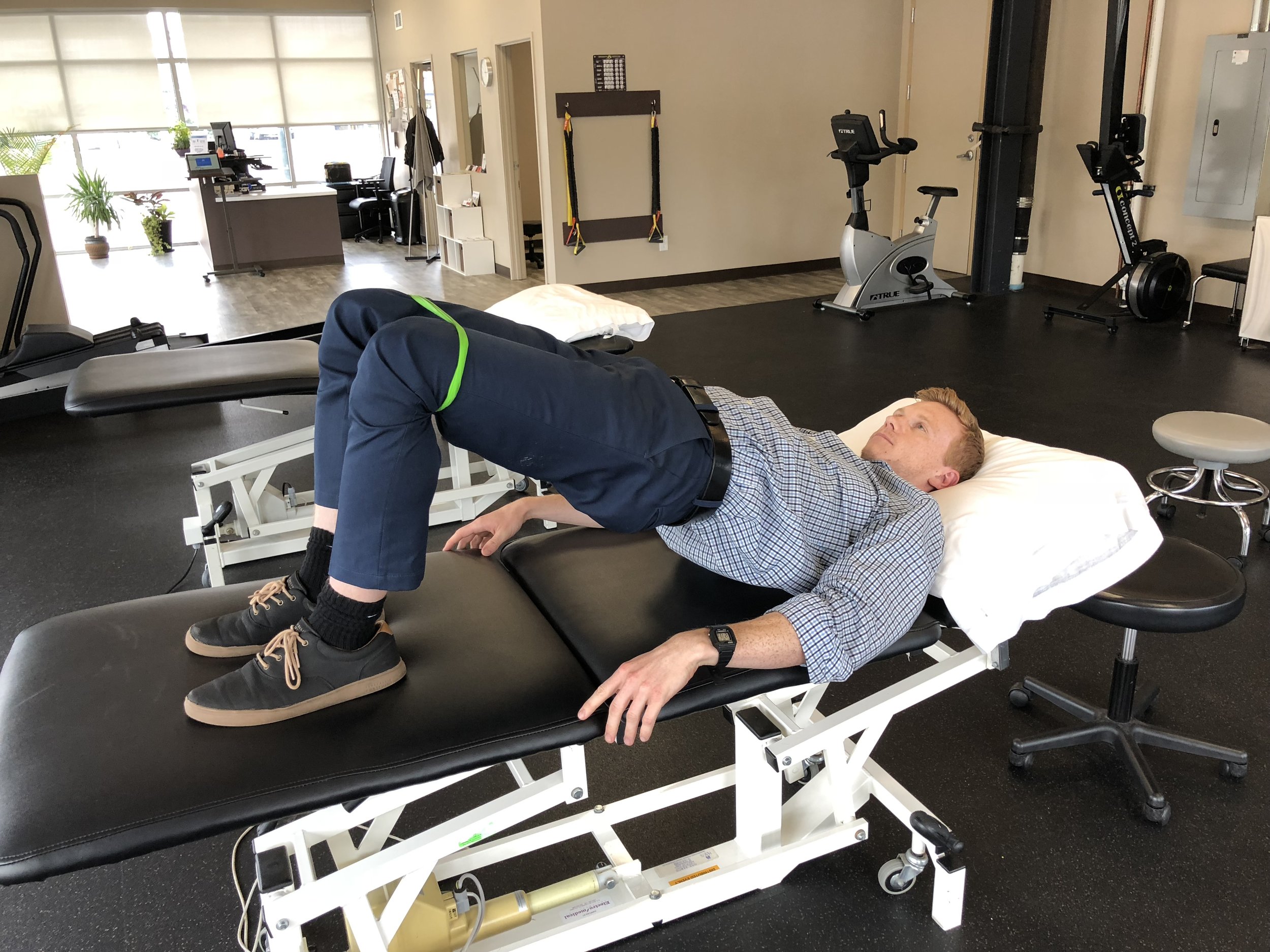The glut muscle group, including the gluteus maximus and medius, are commonly weak among patients with lower quarter diagnoses including low back pain, patellofemoral pain syndrome, and ankle sprains. These muscles can be targeted with many different exercises, but some exercises cause excessive compensations of adjacent muscle groups in patients with pain. For example, the hip flexors and tensor fascia lata (TFL) commonly compensate for weak glut muscles. Exercising in the presence of these compensations perpetuates pain, weakness, and poor movement quality. A recent study highlights which exercises optimize glut recruitment while limiting compensation form these adjacent muscles.
Bishop and colleagues assessed the hip muscles EMG response to 13 commonly prescribed Physical Therapy Exercises to determine which exercises recruit the gluteus muscles while limiting substitutions from the hip flexors and TFL (IJSPT. 2018). Authors report the greatest relative gluteus activation, with minimal substitution or compensation, included the bridge with a band around knees (1st picture), sidelying hip abduction against a wall (2nd picture), clam shell against the wall with or without a band around the knees (3rd picture), and the running man on a stability trainer. This research is consistent with prior research indicating the clam shell may be an optimal exercise to begin the strengthening process due to its’ ability to optimally recruit the gluteus muscles while minimizing contributions from the TFL.



